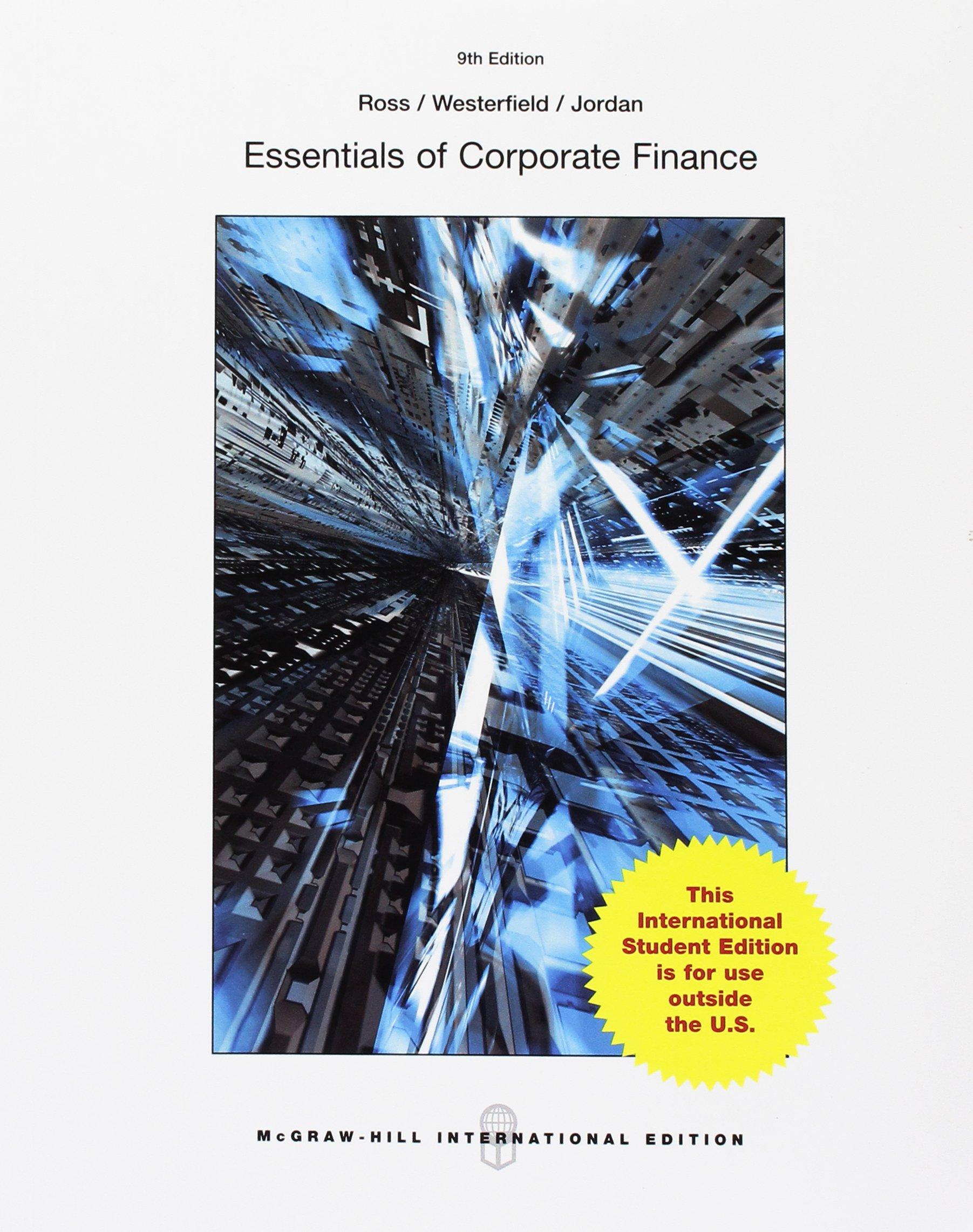Question
1. Stephanie would like to purchase a bond that has a par value of $1,000, pays $80 at the end of each year in coupon
1. Stephanie would like to purchase a bond that has a par value of $1,000, pays $80 at the end of each year in coupon payments, and has ten years remaining until maturity. If the prevailing annualized yield on other bonds with similar characteristics is 6 percent, how much will Stephanie pay for the bond?
| a. | $1,000.00 |
| b. | $1,147.20 |
| c. | $856.80 |
| d. | none of the above |
2. Julia just purchased a $1,000 par value bond with a 10 percent annual coupon rate and a life of twenty years. The bond has four years remaining until maturity, and the yield to maturity is 12 percent. How much did Julia pay for the bond?
| a. | $1,063.40 |
| b. | $1,000 |
| c. | $939.25 |
| d. | none of the above |
3. To determine the present value of a bond that pays semiannual interest, which of the following adjustments should not be made to compute the price of the bond?
| a. | The annualized coupon should be split in half. |
| b. | The annual discount rate should be divided by 2. |
| c. | The number of annual periods should be doubled. |
| d. | The par value should be split in half. |
| e. | All of the above adjustments have to be made. |
4. A $1,000 par value bond, paying $50 semiannually, with an 8 percent yield to maturity and five years remaining to maturity should sell for
| a. | $1,000.00. |
| b. | $1,081.11. |
| c. | $798.70. |
| d. | $880.22. |
| e. | none of the above. |
5. If the level of inflation is expected to ____, there will be ____ pressure on interest rates and ____ pressure on the required rate of return on bonds.
| a. | increase; upward; downward |
| b. | decrease; upward; downward |
| c. | decrease; upward; upward |
| d. | increase; upward; upward |
| e. | increase; downward; upward |
6. An economic announcement signaling ____ economic growth in the future will probably cause bond prices to ____.
| a. | weak; decrease |
| b. | strong; increase |
| c. | weak; increase |
| d. | strong; decrease |
| e. | Answers C and D are correct. |
7. Because of a change in the required rate of return from 11 percent to 13 percent, the bond price of a zero-coupon bond will fall from $1,000 to $860. Thus, the bond price elasticity for this bond is
| a. | 0.77. |
| b. | -0.77. |
| c. | -0.90. |
| d. | -1.06. |
| e. | none of the above. |
8. The required rate of return on a certain bond changes from 12 percent to 8 percent, causing the price of the bond to change from $900 to $1,100. The bond price elasticity of this bond is
| a. | -0.36. |
| b. | -0.44. |
| c. | -0.55. |
| d. | -0.67. |
| e. | 0.67. |
9. Assume a bond with a $1,000 par value and an 11 percent coupon rate, two years remaining to maturity, and a 10 percent yield to maturity. The duration of this bond is ____ years.
| a. | 1.92 |
| b. | 1.50 |
| c. | 1.90 |
| d. | none of the above |
10. A bond has a $1,000 par value and an 8 percent coupon rate. The bond has four years remaining to maturity and a 10 percent yield to maturity. This bond's modified duration is ____ years.
| a. | 1.33 |
| b. | 1.27 |
| c. | 3.24 |
| d. | 1.31 |
| e. | none of the above |
Step by Step Solution
There are 3 Steps involved in it
Step: 1

Get Instant Access to Expert-Tailored Solutions
See step-by-step solutions with expert insights and AI powered tools for academic success
Step: 2

Step: 3

Ace Your Homework with AI
Get the answers you need in no time with our AI-driven, step-by-step assistance
Get Started


